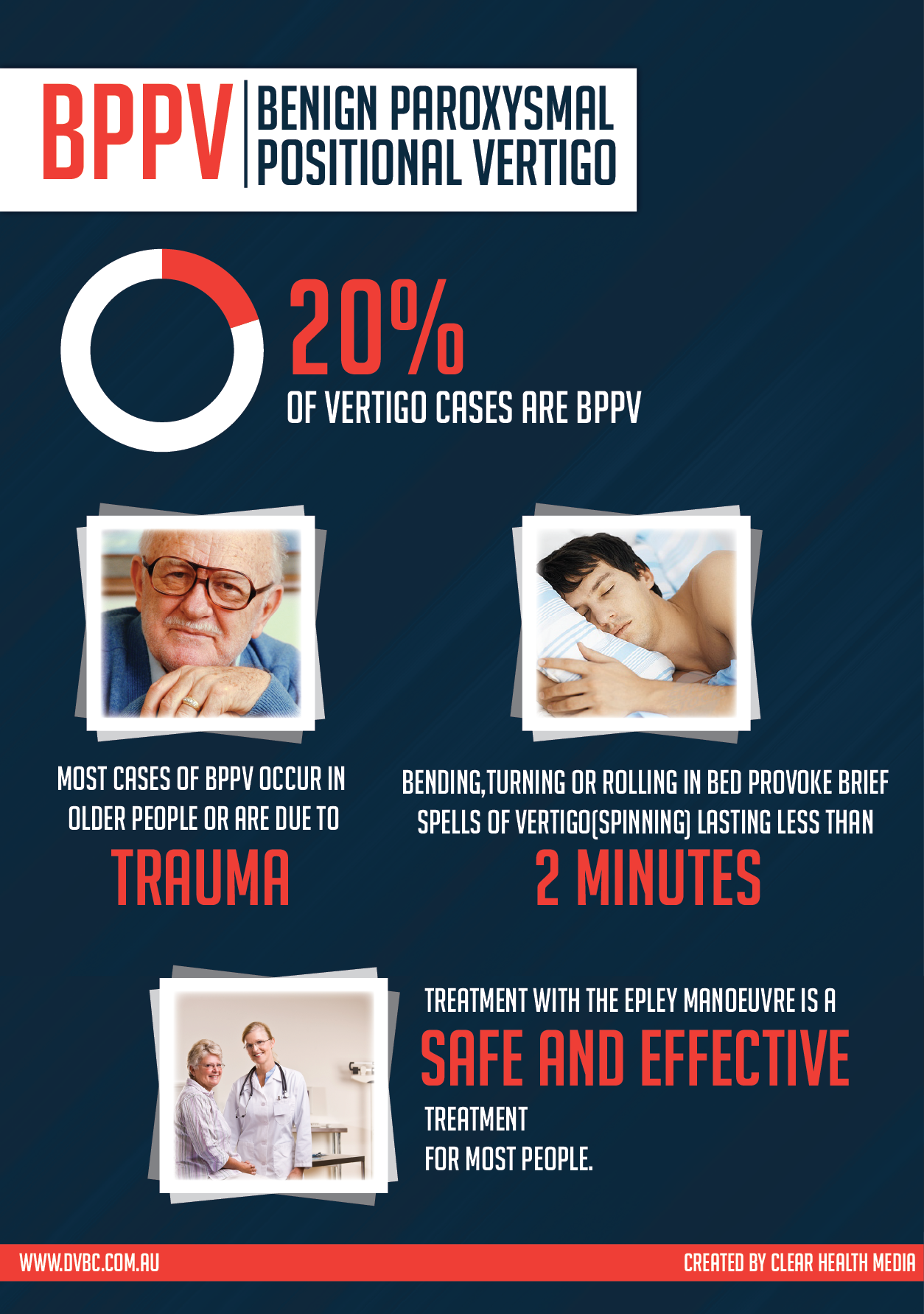
The second, much rarer type is cupulolithiasis. The ear crystals settle at the bottom of the canal within a few seconds, and the BPPV symptoms will stop. When there is a change in canal orientation, the ear crystals float downwards, stimulating the balance organ as they go. The most common type is canalithiasis, in which the ear crystals are free-floating within the fluid in the semicircular canal. The affected canal will determine the sorts of movements that will trigger the dizziness and the direction of spinning sensations that the BPPV sufferer will experience. BPPV SymptomsĬhanges in head position alter the orientation of the semicircular canals, and gravity causes the dislodged ear crystals to shift, stimulating the balance system and causing brief symptoms of BPPV.īPPV most commonly affects the posterior semicircular canal, but the horizontal and anterior canals can also be affected. Head trauma can cause BPPV, and evidence suggests that hormonal factors can affect BPPV, with a significant association between benign positional vertigo and osteopenia/osteoporosis.

The likelihood of onset is known to increase with age. However, there is evidence that BPPV can develop secondary to an inner ear disease (such as vestibular neuronitis, labyrinthitis or Ménière’s disease). The cause of positional vertigo, specifically BPPV, is most often unknown or idiopathic. For this reason you may wish to be accompanied when you attend an appointment for this manoeuvre and we do not recommend you drive immediately after.Benign Positional Vertigo occurs when otoconia (tiny calcium carbonate ear crystals, like grains of sand – which are normally found in the balance organ) dislodge and migrate into the semicircular canals. It is not uncommon to feel a little unsteady and fatigued after the treatment but this should settle within a couple of days. While the manoeuvre does appear to be very successful in treating this condition, it sometimes needs to be performed more than once and does not work on everyone.
Benign vertigo series#
All it involves is moving the head slowly through a series of positions. However, there is a manoeuvre that can help reposition the crystals. In many people this condition will eventually get better by itself as the particles float back to where they came from. This sends confusing messages to your brain, causing vertigo. However, certain head movements cause them to be swept along the fluid-filled canal, setting off abnormal fluid movements. When your head is still, the fragments sit at the bottom of the canal. The fragments don’t usually cause a problem unless they get into one of the ear’s fluid-filled canals.

If these crystals come loose and float into one or more of the semi-circular canals it results in BPPV.īPPV is thought to be caused by small fragments of debris (calcium carbonate crystals), which break off from the lining of the channels in your inner ear. There are also two patches of jelly that have little chalk crystals stuck to the surface. There are three tubes, each lying at a different angle, called the semicircular canals. The balance part of your inner ear (vestibular system) has five parts to it. It is called vertigo because there is a brief, but often intense, illusion of movement.

Benign vertigo pdf#
Download and print as a PDF (222kB pdf) On this page


 0 kommentar(er)
0 kommentar(er)
